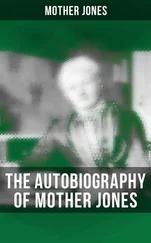For most of the world infection is still a scourge. Ten million lives a year are lost to measles, and five million to diarrhoea, diseases that could, given the political will, be controlled by vaccines and by clean water. Schistosomes, another parasite that should be simple to contain, attack two hundred million people. Faced with this onslaught by a series of changing enemies, natural selection can never relax. As more is discovered about ourselves, the importance of disease, extant or extinct, looms larger. It may be that much of the mass of human variation is a remnant of past battles against infection and that many of the genetic trends across the globe result from selection by disease today or in earlier times.
Disease itself also evolves. If it did not, its agents would soon be extinct. It once appeared that evolution would inevitably lead to a truce with those infected and that the best strategy for a pathogen would be to keep its host — its homeland — alive. Sometimes, no doubt, this is true. However, the genes that drive a disease alter in their own interest alone. If the most efficient way to increase in number is to kill the patient, then natural selection will provide the means to do so.
Before flush toilets (which, in their early days, fed directly into rivers) cholera was less dangerous. It had to keep its prey healthy for long enough for them to move to another village and to pollute its wells with the bacillus. As soon as one patient could infect hundreds more as his waste poured into a river cholera turned vicious: the victim needed to survive only to reach a water closet. If he died from fluid loss while pumping out millions of bacteria, that mattered not at all.
The evolutionary struggle against malaria is the best illustration of the power of disease in evolution. Three hundred million people are infected and the disease kills two million a year — half of them African children. Almost half the world's population lives in malarious regions and, given the rate of growth in the tropics, the death rate may double within the next thirty years. Increased travel means that the disease can spread at a great rate. More than two thousand cases are imported to Britain each year and, now and again, malaria is transmitted within southern England by a native mosquito. In the United States, with its delta cities, the risk of a return of endemic malaria is real (particularly as mosquitoes have found new places to breed such as in the vast dumps of tyres fitted with stagnant water that defile the landscape).
The malady is caused by a single-celled parasite, one of several species of Plasmodium, which is transmitted by mosquitoes. Females mosquitoes are deadlier than males, as they drink blood (which they need to make eggs). The parasites are injected from the salivary glands and pass to the recipient's liver. Here, they multiply. One infective cell can produce a thousand descendants. These enter the blood, break into red cells and divide again, digesting the haemoglobin as they do. The Plasmodium cells need iron, which they take from the blood. To give under-nourished African children iron supplements can as a result lead to a new eruption of malaria, which had been lying low.
Bouts of fever take place as new waves of cells emerge from the reservoir in the liver. Many of the disease's symptoms are due to the release of iron and other toxic breakdown products as the blood is digested. If the parasites enter the brain there may be a fatal cerebral malaria.
Once the sufferer has been bitten by a mosquito, parasites go into their next phase. Within a man or woman Plasmodium has a life of blameless rectitude as it does little but make thousands of identical copies of itself. In the mosquito it has sex. Males and females mature and mate to give new combinations of genes among their offspring. The next generation migrates to the salivary glands, where they are ready to be injected into a human to start the cycle again.
The several species of malaria parasite have an unexpected evolutionary history. Some of their genes are similar to those found in green plants, so that, perhaps, in the distant past, their ancestors were related to single-celled plants (perhaps those whose modern equivalents cause the 'red tides' that kill fish). The DNA of the most virulent form, Plasmodium falciparum, is similar to that of one which infects birds. Other malaria parasites are closer to those that attack apes. They may owe their relative mildness to a long history within our relatives.
Falciparum malaria needs a dense population to maintain itself. It probably began ten thousand years ago, when Africans shifted from the savannah to farming on the edges of the forests. The symptoms can be recognised in documents from ancient Egypt and China. Hippocrates was the first to point to its association with wet places. The swampy area around Rome — the Campagna — was uninhabited for most of its history because of endemic malaria and the disease destroyed the prosperity of the coastal cities of Greater Greece, such as Sybans and Syracuse. As a result of malaria the fertile Yangtse basin was abandoned for a thousand years. The disease spread over the whole world with the advance of exploration. It was once common in East Anglia, whose local population were once called 'yellowbellies 1after the jaundice caused by chronic infection. It killed King James the First and Oliver Cromwell; and Sir Walter Raleigh on the scaffold was concerned that his trembling might be interpreted as fear rather than what was, ague (or malarial fever).
Hundreds of millions are infected and millions die. Even so, there seems to be an uneasy coexistence between the parasite and its host. Evolution has provided dozens of ways to foil its activities. How humanity copes with the disease demonstrates the strengths and weaknesses of natural selection. All kinds of defences have appeared. Some are effective, some less so; and some impose a terrible cost on those who use them.
One of the great puzzles of biology is the mass of inherited variation on the cell surface. It is important, as it prevents people from accepting tissues from each other. But it did not evolve to make kidney transplants difficult. Perhaps such diversity is a relic ot a history of natural selection by disease, with particular antigens favoured because they protect against specific infections. For malaria, selection must have been strong as half of the population of West Africa have protective antigens although the most severe form of the illness has been around for a mere five hundred human generations.
Once the Plasmodium gets into the red cells there are other defences. Peoples of the Mediterranean and the Middle East bear a mutation which reduces the activity of an enzyme. This makes it hard for the parasite to feed itself, and the cells die, as do their invaders.
Evolution has come up with hundreds more tricks involving the red blood pigment, haemoglobin. In some places in West Africa, up to a third of children carry one or two copies of a mutated haemoglobin known as sickle cell. They have a single alteration in the DNA. This in turn leads to a change in one of the amino acids, the building blocks of the red pigment. When a cell from a carrier of sickle eel! is attacked, the haemoglobin forms fibres and the cell collapses, slowing the invader's growth. This is very effective. A child with a copy of the gene has a ninety per cent protection against the disease.
India and the Middle East have mutations of other amino acids which acr in much the same way, while Italians, Cypriots and others have evolved more drastic defences. Whole sections of the haemoglobin molecule are deleted. Once again, this slows the growth of the Plasmodium. The name of these diseases, the thaiassaemias, reflects their distribution, meaning, as it does, the anaemias of the sea (in this case the Mediterranean). The response to malaria can also involve the persistence into adulthood of a haemoglobin normally found in the foetus.
Читать дальше
Конец ознакомительного отрывка
Купить книгу












